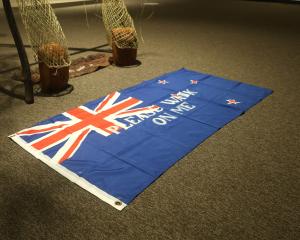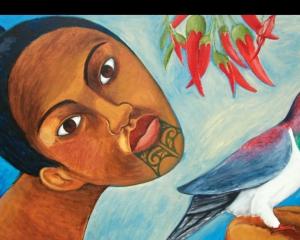
Nigel Benson meets Russell Moses.
It's not hard to imagine Port Chalmers artist Russell Moses as the guardian of a cave at the entrance to a secret art netherworld.
Every so often he disappears below to emerge with another artwork he has pulled from deep within the earth.
Moses (61) has a special relationship with the landscape.
"All art has got something to say and the landscape is an intrinsic part of my existence.
That's what I'm connected to," he says in his Port Chalmers studio.
His most prominent local work is his 1993 sculpture Waka, at Back Beach in Port Chalmers.
Most of his site-specific works are transient and destined to be dismantled either by the artist or nature.
Of his nine outdoor works, only four endure: Waka, Back Beach, Otago Harbour; Waka, Kaipara Harbour; A Spire, Gibbston; and Brick Column, Observation Point, Port Chalmers.
"The weather and the elements reclaim the works back, in time. It's part of the natural process."
Moses is big on natural process. But, he is equally fascinated by human intervention and the way we interact with the land.
His latest exhibition, at the Nadene Milne Gallery in Arrowtown, is a selection of works from "Russell Moses: Garden of Light", which was recently on show at the Dunedin Public Art Gallery.
The pieces draw on the natural landscapes and materials around the Central Otago goldfields.
"A lot of the works are celebrating aspects of the pioneers.
The goldfield works are a celebration of the pioneers' substance, in terms of the hardships they had to go through when living and working on the land," he says.
"There are stories scattered across the landscape waiting to be told.
Part of being an artist is telling those stories.
"Central Otago's very dear to my heart. It's a unique and pristine landscape.
This area is unique in New Zealand, experiencing extremes of climate which has stripped the land bare, giving the appearance of a wasteland.
The early settlers called it `The Desert'. Goldmining scarred the land further," he says.
"Its history, however, is far from barren. The scale of human endeavour in such a hostile environment was monumental.
Early aerial photos of the mine tailings revealed patterns of labour that were ordered, rhythmic and organic in design; reconfiguring these into new landscapes that interweave the past and present and challenge the boundaries between fine and applied art."
Moses has a background in printmaking, ceramics and sculpture, and he dips freely into those disciplines to create work that is heavy with symbolism.
He uses materials such as shade cloth to suggest the dancing light of water, the French curve to waggle a disapproving finger at the French bombing of the Rainbow Warrior, and the shapes of Maori ornaments to symbolise the pounamu industry at Whareakeake Beach (Murdering Beach) near Dunedin in the 1880s.
His Arrowtown exhibition features gold leaf to hint at goldmining in Central Otago.
"It's a deconstructed aerial view of the tailing patterns. It's zoomed in like a satellite view," he says.
"When you see those tailings, there's a unique, repetitive, organic design in them.
Those sorts of things fascinate me. Those patterns in nature. Man's interaction with the landscape.
Even with the new gold - wine - those patterns are forming across the land. They're new designs I've observed over the last 30 years."
Moses established his first studio in the main street of Port Chalmers in the early 1970s.
"Corso rented it to me to help me get started," he recalls.
"The rent was $5 or $6 a year."
Earlier this year, Moses was the sole Otago representative in the 2008 edition of Contemporary New Zealand Art, which annually attempts to list our most significant contemporary artists.
Dunedin art critic David Eggleton has described his work as "abstract minimalism crossed with landscape romanticism".
"His art is about the regenerative power of landscape: its contours, its sense of scale, its history.
But it emerges from the landscape rather than being superimposed, like a monument, on it.
His is an art which sustains itself on a vocabulary of synonyms for nature."
- "Russell Moses" is on at the Nadene Milne Gallery in Arrowtown until December 15. The gallery is open from 10am till 5pm, Tuesday to Sunday.












